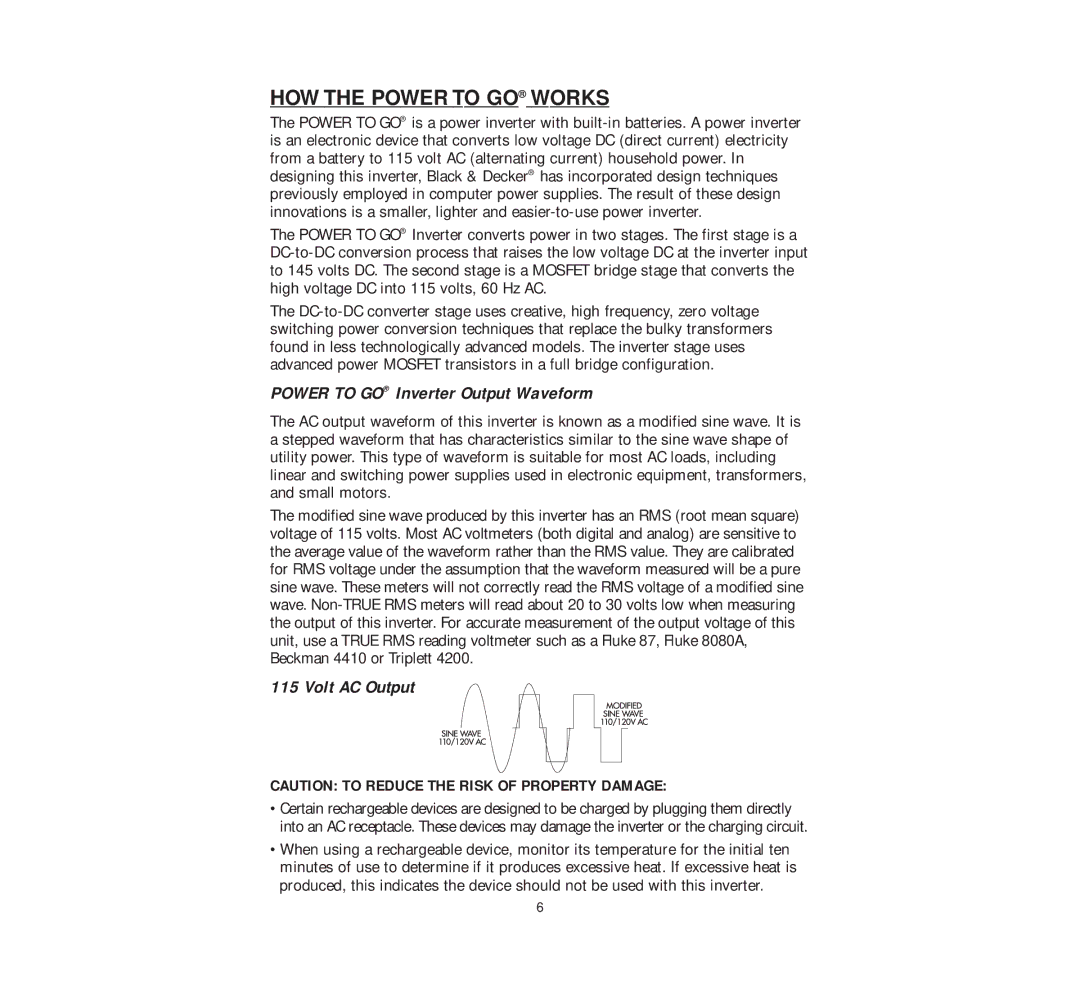
HOW THE POWER TO GO® WORKS
The POWER TO GO® is a power inverter with
The POWER TO GO® Inverter converts power in two stages. The first stage is a
The
POWER TO GO® Inverter Output Waveform
The AC output waveform of this inverter is known as a modified sine wave. It is a stepped waveform that has characteristics similar to the sine wave shape of utility power. This type of waveform is suitable for most AC loads, including linear and switching power supplies used in electronic equipment, transformers, and small motors.
The modified sine wave produced by this inverter has an RMS (root mean square) voltage of 115 volts. Most AC voltmeters (both digital and analog) are sensitive to the average value of the waveform rather than the RMS value. They are calibrated for RMS voltage under the assumption that the waveform measured will be a pure sine wave. These meters will not correctly read the RMS voltage of a modified sine wave.
115 Volt AC Output
CAUTION: TO REDUCE THE RISK OF PROPERTY DAMAGE:
•Certain rechargeable devices are designed to be charged by plugging them directly into an AC receptacle. These devices may damage the inverter or the charging circuit.
•When using a rechargeable device, monitor its temperature for the initial ten minutes of use to determine if it produces excessive heat. If excessive heat is produced, this indicates the device should not be used with this inverter.
6
